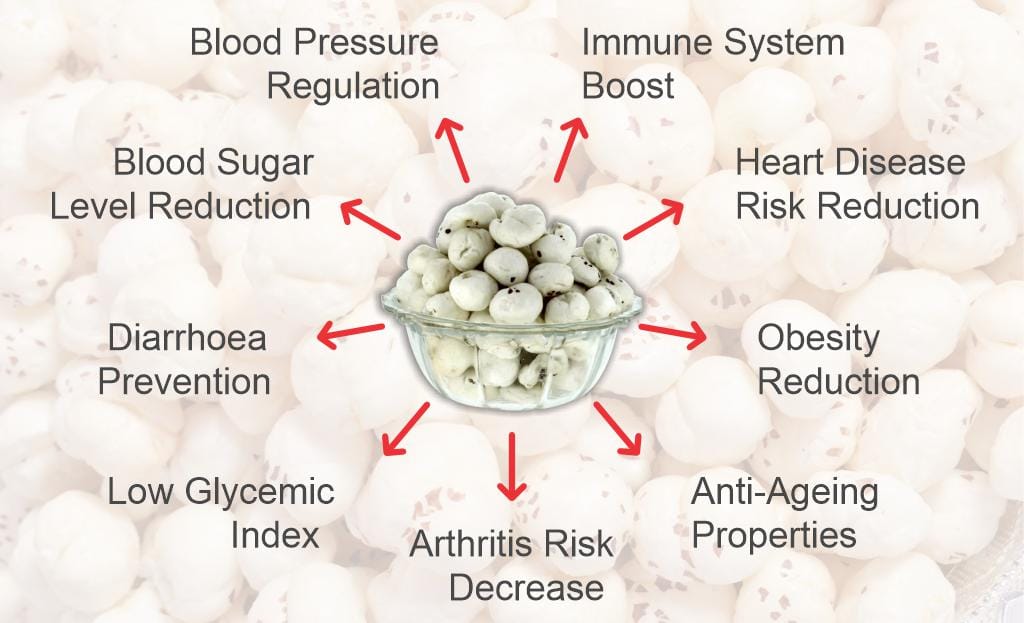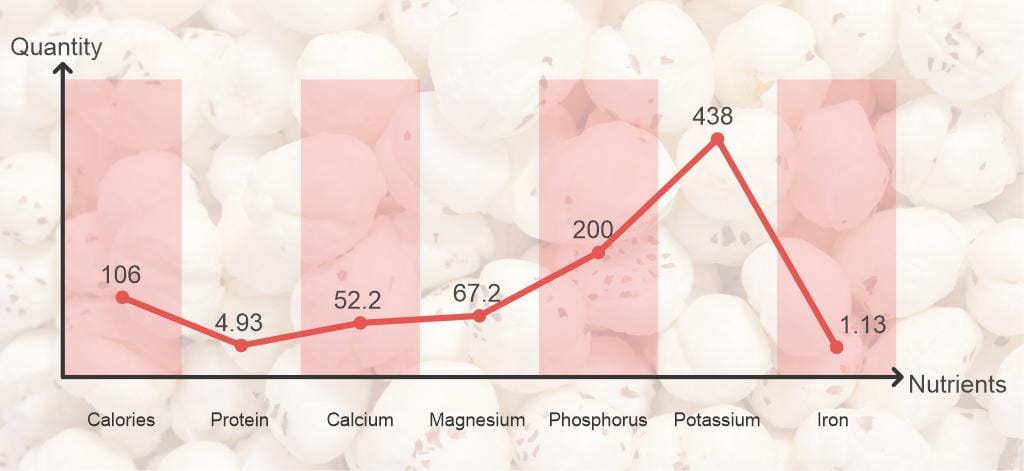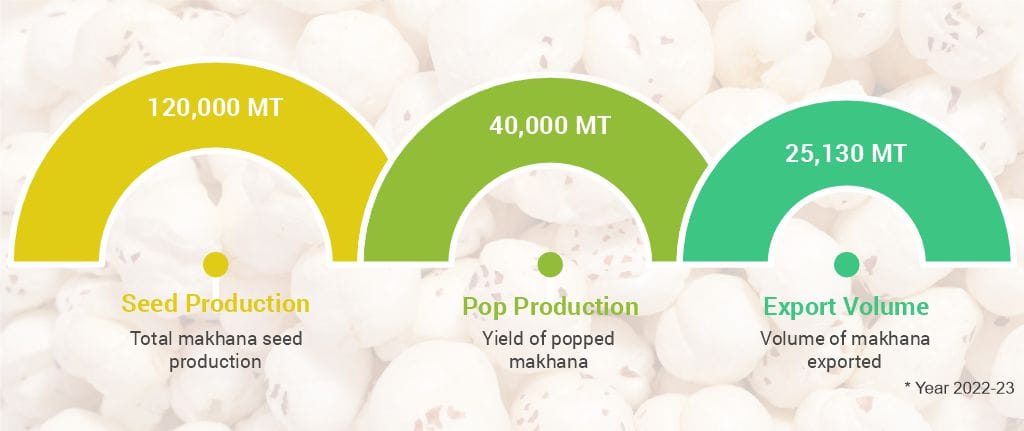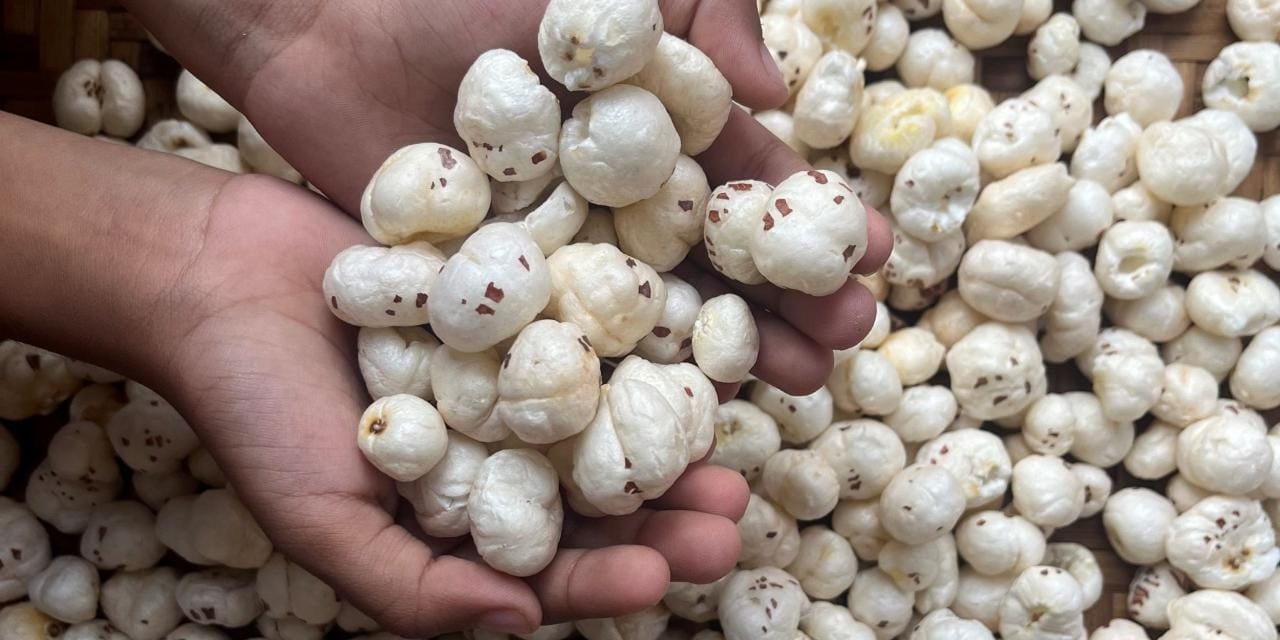Proposal for a Makhana Board has sparked interest in the potential of this traditional superfood. However, can Makhana emerge as a big opportunity in food processing to attract private investment to produce and market value-added products, argues Rajat K Baisya*.
In the 2025 budget, the Finance Minister has proposed the formation of a Makhana Board in Bihar with a fund of Rs100 crores. At the time, I thought this announcement was made keeping in mind the forthcoming Bihar election. The Board was said to have been established to improve the production, processing, value addition, and marketing of makhana. In addition, it is also expected to provide handholding and training support to makhana farmers and to work in tandem to ensure they receive the benefits of all relevant Government schemes. I was wondering if Rs100 crores was too small a grant to take a traditional product like makhana to the next level and attract private investment in the makhana category.
However, in recent times, I have found that there is growing interest in the makhana industry. With this meagre fund, the Union Budget also expects to address key industry challenges by streamlining production, standardizing product quality control, and helping in market development through brand building and promotional efforts to facilitate makhana export. The expectation is quite ambitious. With that in mind, I am taking a closer look at the product category to understand its domestic and global market potential.
Bihar: The Heartland of Makhana Farming in India
Makhana, also known as fox nuts or lotus seeds, are the dried seeds of the Euryale ferox plant, a type of water lily. They are a popular snack in many parts of Asia, including India and China. Bihar accounts for 90% of the total makhana production, and Madhubani is said to be the motherland of makhana. Makhana is also produced in Assam and West Bengal in smaller quantities. Famous for its many health benefits and nutritional value, makhana has been present in Indian households for over 200 years. The origin of makhana cultivation in India dates back to Madhubani, a key region in Mithilanchal, Bihar.
Bihar contributes significantly to national makhana production, with 20% of the total production coming from Madhubani district alone. Madhubani, Darbhanga, Sitamarhi, and Katihar are the primary districts in Bihar where makhana is cultivated. As Bihar is producing 90% of the country’s makhana for both consumption and export, it makes sense that the Makhana Board is set up there.

Health and Nutritional Benefits of Fox Nuts
Roasted Makhana is consumed just like a snack but not as popular as Namkeen and potato chips. Makhana is a good source of protein, fibre, and various minerals like magnesium, potassium, and iron. 32 gms of dried lotus seeds (makhana) can provide Calories: 106, Protein: 4.93 gm, Calcium: 52.2 mg, Magnesium: 67.2 mg, Phosphorus: 200 mg, potassium: 438 mg, Iron: 1.13 mg. Makhana consumption is claimed to have many health benefits, including: Boosting our immune system, Reducing the risk of heart disease, Helping to reduce obesity, Providing anti-ageing properties, decreasing the risk of arthritis, Offering a low glycemic (carbohydrate) index, Preventing diarrhoea, Reducing blood sugar level, Acting as a blood pressure regulator.

Production, Export, and Sales Potential
Available data shows that India is the largest exporter of makhana worldwide, accounting for over 90% of the global export. India is said to be exporting to the USA, Australia and Canada, as well as Middle Eastern countries. In the year 2023-2024, India exported approximately 25,130 metric tons of makhana. As per the estimate of the National Research Center for Makhana, Darbhanga (ICAR), the total area under makhana cultivation in India is estimated to be 15000 Ha. It yields 120,000 MT of makhana seeds, which after processing yields 40,000 MT of makhana pop, which would mean that the yield of dried popped makhana is about 30% of the seed production. And if 25130 MT is the export out of 40000 MT, then export is about 62% by volume and not 90% as has been mentioned in some estimates.
But it is still an export-oriented industry, leaving only 40% for domestic sales. The domestic sales have been reported as ` 7.8 billion in 2023. If 25130 MT is exported, then it leaves 14870 MT to be sold in the domestic market, which works out to a sales value of rs 524455 per MT or Rs 524 per kg.

Makhana exports can be in both bulk and also in consumer-pack. Bulk packaging for export is common, often using options like durable PPE bags with food-grade lining. Consumer-pack includes options like vacuum-sealed bags or tin cans, catering to different market demands.
In 2023-2024, India exported approximately 25,130 metric tons of Makhana. If this is 90% of the global trade, the global market size would be about 28,000 MT. The domestic market size is about 15000 MT. As such, it does not look like a big market. However, the market can be developed.
Some estimates projected the global Fox Nuts (Makhana) Market was valued at USD 1.21 billion (Rs 10330 crores) in 2024 and, growing at over 10% and is expected to reach USD 2.90 billion by 2033. As against that, India’s domestic market in 2023 was Rs 7800 crores, growing at 9.7%to reach Rs 18900 crores by 2032. If India has to meet the global demand, then production has to increase.
Some estimates suggest a market size in India in value terms is Rs INR 100 billion in 2023. If so Our domestic demand would be equal to global trade in makhana. The market price of Makhana is about ` 1400 to 1500 per kg. As such, it is costly. Profitability would thus be an issue.
| Also Read: The Rise of Makhana: Opportunities and Challenges for India’s Superfood.
Leading Producers and Rural Employment
India’s total annual makhana production is around 56,400 MT, with Bihar leading the charge, covering an area of about 27,800 hectares. One of the key players in the market is Madhubani Makhana Pvt Ltd, based in Madhubani, with an office in London.
The makhana industry in Bihar directly employs about 10 lakh families in cultivation and processing, with a large number from the Mallah community. Another 25,000 farmers are actively involved. As the industry scales, employment potential in the makhana value chain is expected to grow—farm-level engagement could rise from 20,000 to 50,000 families, and post-harvest processing jobs are also expected to increase.
Key Challenges
l Fragmented Supply Chain: The makhana supply chain is fragmented, making it challenging for producers to access raw materials and manage logistics.
l Limited Consumer Awareness: While awareness is growing, there’s still a need to educate consumers about the diverse uses and health benefits of makhana.
l High Raw Material Costs: The cost of raw makhana can impact profitability.
Fox nuts have traditionally been harvested by diving without breathing equipment to a depth of 8 feet (2.4 m) in freshwater ponds. This is arduous, with skin hazards from mud and the plant’s thorns. The National Research Centre for Makhana has pioneered the plant’s cultivation in fields flooded to a depth of 1 foot (0.30 m), which makes production and harvesting easier. The area of land devoted to fox nut production has increased to 87,000 acres (35,000 ha) by 2025. The Centre has developed a more productive variety, increasing farm income, and has designed a harvesting machine.
Challenges in Makhana Cultivation, processing and distribution
Makhana or fox nut, or Gorgon nut, as it is commonly known, is cultivated either in water bodies/ponds having water depth of 4-6 ft. or in 1-2 ft deep shallow agricultural fields.
Cultivating Makhana incurs minimum expenditure as new plants easily germinate from the left-over seeds, which are taken from the previous harvest.
Although suitable production technologies have been developed for makhana cultivation and farming, there are many challenges, like Proper weed management in water bodies, developing high-yielding varieties of makhana, productivity improvement, cost reduction, integrated technology along with aquafarming, developing process technology, developing better equipment for harvesting and popping machines, seed grader etc., are key imperatives.
| Also Read: The Rise of Makhana: Opportunities and Challenges for India’s Superfood.
Conclusion
In addition, better storage, including cold storage facilities, testing and quality control equipment, and training of the staff, are also required to lift the makhana production and distribution from its current status. There is also a need for product development to market value-added, quality products. As such, we have a lot to do to deliver the expected level of performance.
FAQs about Makhana Industry in India
Makhana, also known as fox nuts or lotus seeds, are the popped seeds of the Euryale ferox plant. They are low-calorie, gluten-free snacks rich in protein, fiber, and essential minerals. With rising awareness about healthy snacking options in India, makhana is emerging as a nutritious alternative to fried snacks like namkeen and chips.
The Union Budget 2025 proposed a ₹100 crore allocation to establish the Makhana Board in Bihar. This initiative aims to boost makhana production, value addition, processing, and exports, while also supporting farmers with training and access to government schemes.
Bihar is the leading state in makhana cultivation, contributing over 90% of India’s total production. Key districts include Madhubani, Darbhanga, Katihar, and Sitamarhi.
Makhana offers several health benefits, including aiding weight loss, managing blood pressure, reducing blood sugar levels, supporting heart health, offering anti-aging properties, and having a low glycemic index suitable for diabetics.
The domestic makhana market in India was valued at ₹7,800 crores in 2023 and is expected to reach ₹18,900 crores by 2032. Globally, the fox nut market is projected to grow from USD 1.21 billion in 2024 to USD 2.90 billion by 2033, with India being the largest exporter.
Major challenges include fragmented supply chains, high cost of raw makhana, lack of cold storage and modern processing equipment, limited consumer awareness, and the need for value-added product development.
One of the prominent players is Madhubani Makhana Pvt Ltd, based in Bihar, which is also active in international markets with an office in London. Several startups and food brands are also entering the makhana space due to its rising demand.
*Author is the chairman of Strategic Consulting Group and served as Professor and Head of the Dept. of Management Studies, IIT Delhi.
Have a news or topic to share with industry? Write to us editorial@pfionline.com

















